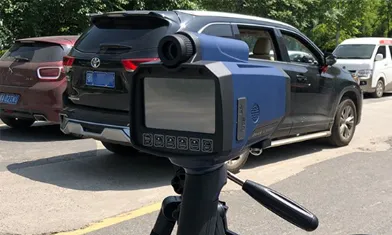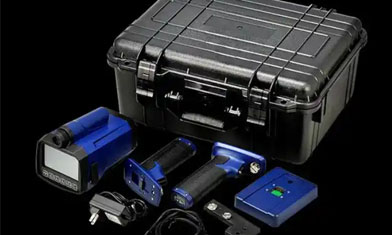Scout Military Binoculars: A Sharp Eye For Battlefield Insight
In the military, scouts shoulder the heavy responsibility of obtaining critical intelligence and gaining insight into battlefield situations, and military binoculars are their indispensable "right-hand men." A high-performance scout binocular must meet stringent standards in terms of optical performance, structural design, and functional configuration to meet the diverse needs of complex battlefield environments.
Core Optical System: The Cornerstone of Clear Imaging
1. High Magnification and Large-Aperture Objective Lens Synergy
Scouts often need to observe targets from a distance. Military binoculars typically feature high magnifications, commonly 8x and 10x, with some models reaching 12x or even higher. High magnification brings distant targets closer, making it easier for scouts to discern details such as enemy personnel, equipment, and fortifications. Furthermore, a large-aperture objective lens (commonly 30mm-50mm in diameter) collects more light, enhancing image brightness and clarity. This ensures image quality even in low-light conditions, such as dawn and dusk, allowing scouts to accurately capture target movements.
2. Multi-layer Broadband Coating Technology Improves Light Transmittance
To reduce energy loss caused by light reflection and refraction between lenses, military telescopes utilize multi-layer broadband coating technology on both the objective and eyepiece lenses. This coating is optimized for different wavelengths of light (covering the entire visible spectrum), significantly increasing light transmittance, typically reaching over 90% to 95%, with some high-end models exceeding 98%. This high transmittance allows more ambient light to enter the telescope, resulting in more vivid images with higher contrast and clearer visibility of subtle targets, helping scouts quickly identify critical information even in complex backgrounds.

Rugged and Durable Structural Design: Suitable for Harsh Battlefield Environments
1. High-Strength Metal Body
The battlefield environment is harsh, with vibrations, impacts, and drops common. Therefore, the bodies of military telescopes used by scouts are often made of high-strength metals such as aluminum alloy and magnesium alloy. This material has low density and high strength, ensuring the overall durability of the telescope, resisting external impacts and preventing cracking and deformation that could affect optical performance. It also reduces weight, making it easier for scouts to carry and operate for extended periods, allowing for flexible use during marches and evacuations.
2. Sealing, Waterproofing, and Anti-Fog Technology
Field operations often encounter rain, snow, and humid weather. To ensure the proper function of the telescope, it must possess excellent sealing properties. Precision rubber seals and waterproof adhesives are used to tightly seal the components of the telescope, preventing rain, dust, and moisture from entering. Furthermore, a nitrogen filling process, which fills the interior of the telescope with dry nitrogen, isolates moisture. This effectively prevents fogging of the lens, even in environments with large temperature fluctuations (such as the diurnal temperature swings in mountainous areas), ensuring a clear field of view and providing stable observation conditions for scouts.
Practical Functional Configuration: Meeting the Needs of Reconnaissance Missions
1. Reticle-Assisted Measurement
Scouts not only need to observe targets but also obtain information such as their position and distance. Military binoculars feature built-in reticles with specific scales and patterns (such as crosshairs and milgrain lines). By analyzing the relative position of the reticle and the target in the field of view, combined with trigonometric principles, scouts can quickly estimate parameters such as the target's range, altitude, and angle. This provides critical data for intelligence transmission, fire support, and precise guidance of subsequent combat operations.
2. Expanded Low-Light-Level Night Vision and Thermal Imaging Capabilities (Select High-End Models)
With technological advancements, some reconnaissance military binoculars now incorporate low-light-level night vision or thermal imaging capabilities. Low-light-level night vision technology utilizes weak natural light (such as starlight and moonlight) and uses image intensifier tubes to amplify the light signal thousands of times, converting it into a visible image. This allows scouts to clearly see the target's outline and movement trajectory in low-light conditions. Thermal imaging, based on the thermal radiation characteristics of an object, converts invisible infrared radiation into a thermal image, revealing the target's temperature distribution. Thermal imaging works in darkness, smoke, and dust, and can penetrate camouflage to detect hidden targets, significantly enhancing scouts' reconnaissance capabilities at night and in complex weather conditions.
Differences in the Application Scenarios of Different Types of Telescopes in Reconnaissance Missions
1. Traditional Optical Telescopes
Under clear skies and ample sunlight, traditional optical telescopes, with their high clarity and true color reproduction, are suitable for long-range observation of targets in open areas, such as enemy troop concentrations and vehicle maneuvers on plains. They provide scouts with clear and intuitive visual information, helping them to assess enemy combat intentions.
2. Low-light-level Night Vision Telescopes
When night falls, low-light-level night vision telescopes become a powerful weapon for scouts. Under the dim illumination of starlight or moonlight, they can be used for night patrols in urban areas, observing the entry and exit of enemy strongholds and the deployment of sentries. In mountainous areas, they can help scouts search for hidden enemy personnel and secret camps hidden in the forests, effectively extending their reconnaissance range in low-light conditions.
3. Thermal Imaging Telescopes
In complex weather conditions (dense smoke, fog, dust) or in complete darkness, thermal imaging telescopes play a crucial role. For example, during reconnaissance around a fire scene, it can detect the location of trapped people and the direction of fire spread through thick smoke; during border patrol, it can penetrate vegetation and camouflage to identify hidden illegal border crossers, and use the temperature difference between the target and the environment to accurately obtain key intelligence, providing reliable support for reconnaissance operations.





















